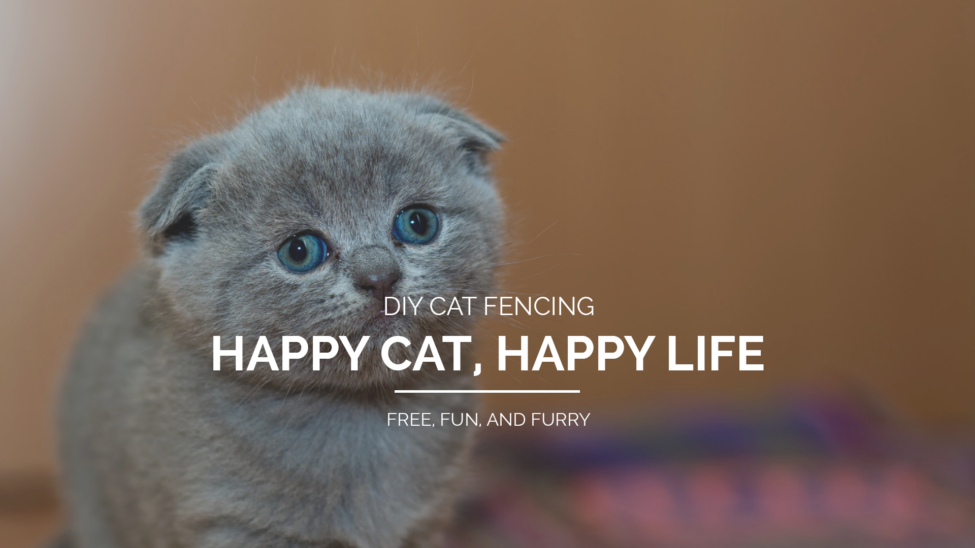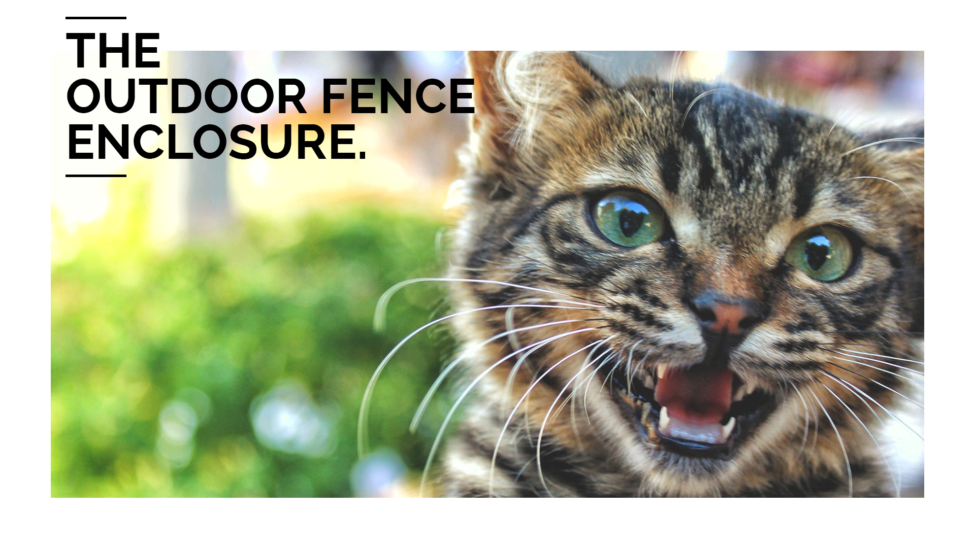DIY Cat Fencing
DIY Cat Fencing
Has your cat’s constant mewing at the back door got you thinking about installing a cat fence in your yard? Are you feeling guilty about keeping your cat indoors, all the time, while she gazes longingly out the window? Are you just going to keep her inside for the rest of her life, or are you going to do something about it?
If your answer is a resounding “yes!” then you are at the right place. We will outline a few fairly straightforward DIY cat fencing projects you can complete in a day or two. Your fur baby will be safely enjoying your now-escape-proof yard in no time!
Bringing your indoor cat to the great outdoors.
DIY Cat Fencing Options
Helping your cat have an interesting, engaging and above all safe time in her backyard requires just one thing: securing the perimeter. Whether it encompasses the entire backyard or just a designated cat area, there is a myriad of ways to do this, at different price points and skill levels. There are many ways to contain your furry family member in a variety of cat fences but here are a few ways feline lovers are creating a fun backyard spot for their favorite felines:
Existing Fence
If you already have a fenced-in backyard or are utilizing an underground fence, you are 90% to the finish line. With an existing fence, all you need to do is make it climb-proof, and there are a number of ways to achieve this.
- Add cat rollers: Roller bars, either wooden or metal, are favored for their ease at blending in with the surroundings in a seamless, aesthetically-pleasing way. The rollers require the following hardware: brackets, axles, machine-ground rollers cut to size, and various sized-screws.
- Add spike strips: Although quite intimidating in appearance, these strips typically contain rubber spikes that cause more surprise and inconvenience than discomfort. Depending on the height of your fence and the ability of your kitty, this may be a short-lived solution.
- Mesh-and-bent-bracket combo: This is a popular choice worldwide, due to its extreme effectiveness. The metal or wooden angled brackets, placed on top of the fence, a few feet or inches apart, are covered with metal mesh (or even chicken wire,) creating an overhang that can stop the most tenacious kitten.
- Plant hanger (bracket), chicken wire, and zip-tie combo: You could call this the “MacGyver” of cat fences, but it will do the trick in a pinch if funds and time are at a premium. Simply affix metal plant hangers/brackets about 6 feet or higher, if possible, off the ground, at regular intervals. Roll out the already-cut-to-fit chicken wire and hang from the brackets. Secure loose wire discreetly with zip-ties. Felines are averse to any loose material that “gives,” so the presence of the wire is an effective deterrent.
- Other versions of #4 above: Just switching out the materials in the above DIY cat fence “recipe” will render similarly successful projects, as evidenced by the dozens of articles and videos available. Proud, resourceful kitty owners boast of using such supplies as garden poles, flag pole brackets, wooden dowels, staple guns, garden netting and fishing line, among other things, to get their backyards sufficiently cat-escape-proof.
Outdoor Cat Enclosures
Some cat owners, recognizing their pet’s need to really experience the outdoors via grazing on grass and plants, will partition off a small patch of the yard and create a special cat-friendly garden. Cats love to nibble on plants and dig in the dirt, so why not throw up a simple mesh fence and place some toys and kitty-friendly plants, like mint and honeysuckle, and let your cat just go to town. There are many plants and flowers that are toxic to cats, so do your homework and place the right foliage in this new outdoor play area.
No Fence, No Problem
If you don’t have a fence, or if you are renting your place and can’t alter the existing fence, another solution for your dilemma is the cat proof freestanding enclosure. Enclosures are supremely secure and versatile, with roofs and many options for customization. They are also usually lightweight, and even portable.
While not technically a DIY cat fence, we have included it in our lineup because the objective of building the freestanding enclosure is identical to the objective of cat-proofing your current fence: both help manifest the desire you have to give your pet a new slice of life, a new perspective, expanded horizons.
A freestanding cat enclosure contains the same basic materials that go into a cat fence: some kind of framing, be it wooden, metal, or PVC, some type of mesh, but with the enclosure, you must add a secure gate, door, or other entrance. If you order your supplies from a dedicated containment company, they will more than likely supply the assembly instructions for you.
Free Standing Cat Enclosures
The cat enclosures take on many forms, and certain friendly configurations, such as tunnels, can be part of the structure. Special shelving, sail shades and cat hammocks, among other amenities, can turn a simple space into a kitty paradise!
It’s the right time to build that cat fence!
Escape-proofing your cat’s backyard with a DIY fence can be as simple as a trip to your local hardware store and a free weekend.
According to the Society for Pet Obesity Prevention, over 55% of cats are categorically obese[1]. Is your pet among the majority? The simple practice of allowing your cat the freedom to roam and explore a much-expanded environment will give her the needed exercise to help maintain a healthy weight. Not to mention the emotional and mental health benefits of being in nature.
Grab your keys, head over to the building supply store, print up some blueprints, crank up YouTube and start creating the safe outdoor space your cat has been yearning for! It’s not that hard, and your furball will thank you (in her own way, of course!)
Resources: [1] https://petobesityprevention.org/
Our Other Services:
 Pet Stop
Pet Stop Get a Free Quote
Connect with Your Local Pet Safety Experts at Pet Stop. Visit, call, or
chat with us – we’re here to help you create the ultimate safe haven for your pet.
Get a Free quote
Name *
Zip code where new fence is required *
Preferred contact method *
Phone Number to Call/Text *
Address *
Stay Connected, Stay in Control
Brief introduction to the OT-300, highlighting remote control, real-time notifications, and easy setup through the Pet Stop Link App.
Download the App


